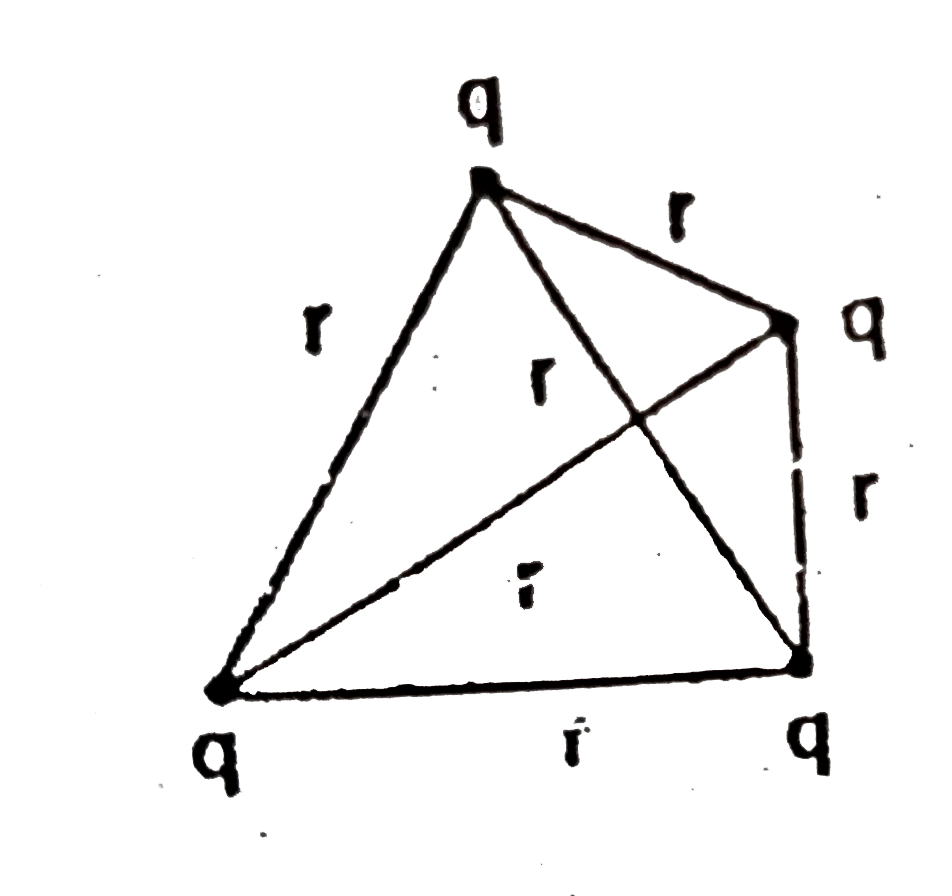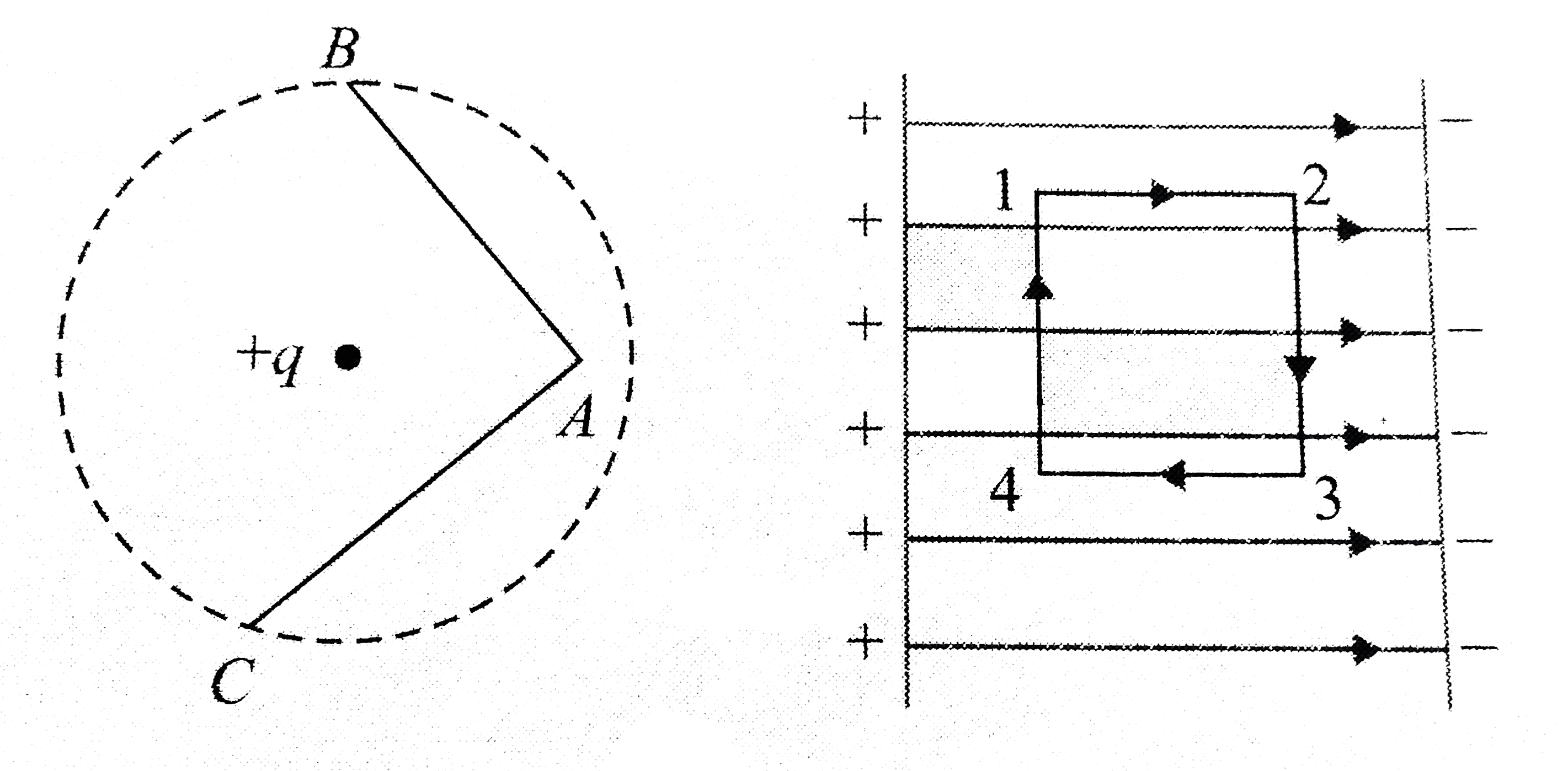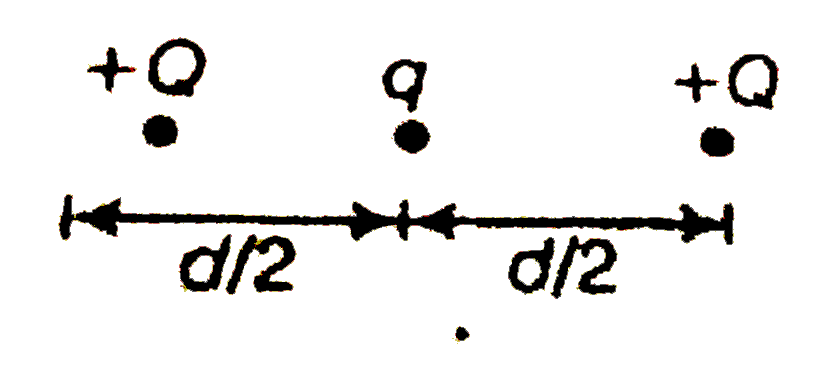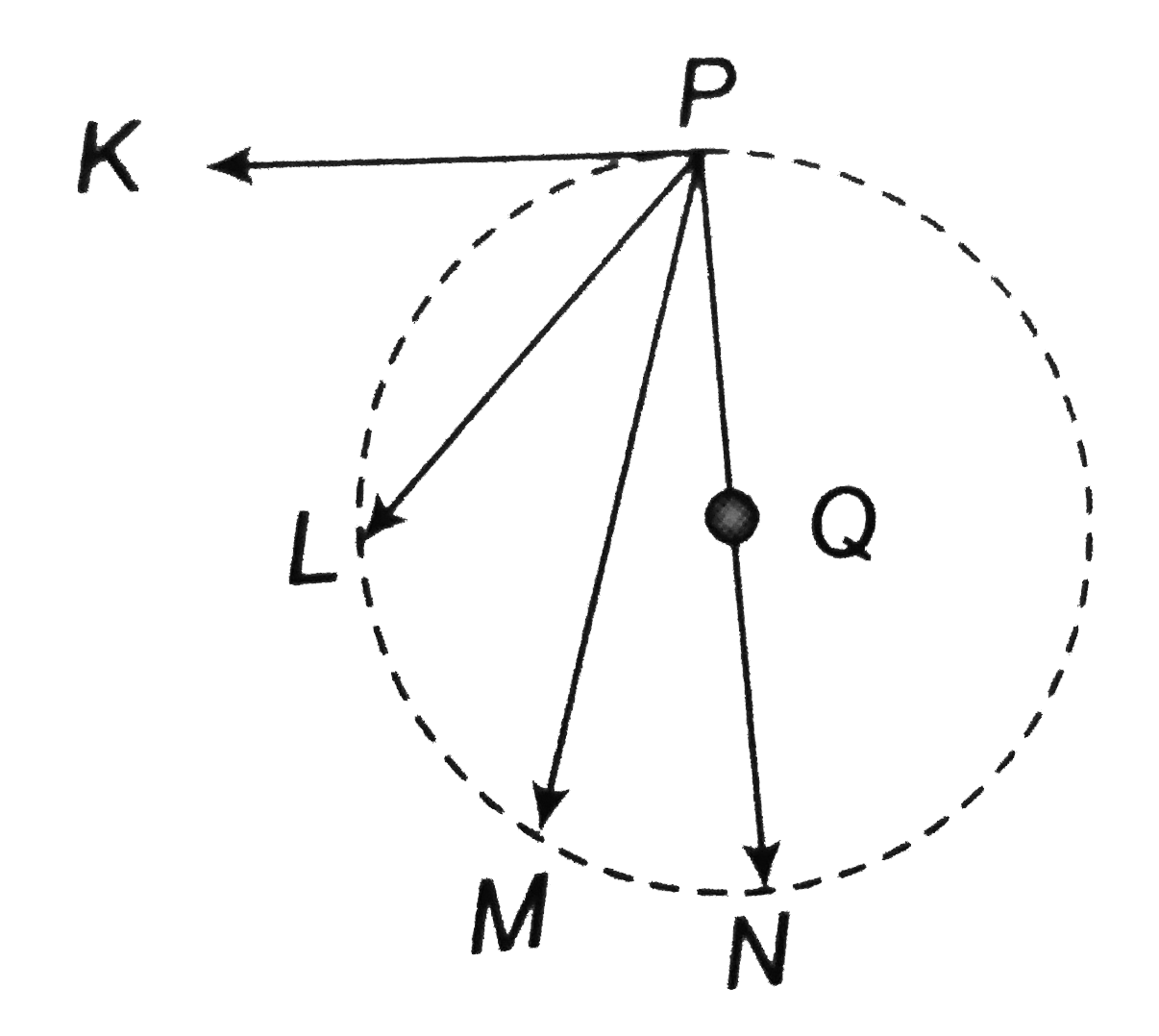The amound of work done in assembling a system of maximum number of charges each of magnitude q so that each charge is equidistant from the other is equal to
q22πε0r
3q24πε0r
3q22πε0r
none of these
The arrangement possible is that of a pyramid
E=6×14πε0×q2r=3q22πε0r

Topper's Solved these Questions
- BOOK - FIITJEECHAPTER - GMP ASSESMENTEXERCISE - Assertion & Reason15videos
GMP ASSESMENT
- BOOK - FIITJEECHAPTER - GMP ASSESMENTEXERCISE - Multiple Question58videos
GMP ASSESMENT
- BOOK - FIITJEECHAPTER - GMP ASSESMENTEXERCISE - Numerical Based61videos
GMP ASSESMENT
- BOOK - FIITJEECHAPTER - GENERAL PHYSICSEXERCISE - MATRIX MATCH TYPE3videos
GENERAL PHYSICS
- BOOK - FIITJEECHAPTER - GRAVITATIONEXERCISE - Numerical based Question2videos
GRAVITATION
Similar Questions
Two identical positive charges are placed at the diagonally opposite corners of a square and two more identical but negative charges are placed at the remaining two corners. What is the work done in putting all charges together at the centre if q is the magnitude of each charge and 2a is the length of each side of the square?
View SolutionOpposite charges …………..each other.
View Solution
Knowledge Check
- Question 1 - Select One
The number of tubes of force originating from a charge of magnitude q are
Aq∈0kBq∈0Cq∈0kD∈0kq - Question 2 - Select One
In a regular polygon of n sides, each corner is at a distance r from the centre. Identical charges each of magnitude q are placed at corners. The field at the centre is
Ann−1kqr2Bn−1nkqr2C0D(n−1)kqr2 - Question 3 - Select One
Magnitude of work done during the charging of a condenser from q=0 to q=Q is
AW=C2QBW=Q22CCW=√QCDW=QC
a. A circle is drawn with center as a charge +q. What is the work done in moving a charge +q from B to C along the circumferebce of the circle ?
B In the above question, if the charge +q is first taken from B to A and then from A to C, on which path is the magnitude of work greater ?
 .View Solution
.View SolutionPositive work is done on a system of two equal charges by an outside agent to bring both the charges together from infinite separation. Can the polarities of charges be determined from this fact?
View SolutionLike charge ………… each other and unlike charges ……… eachother.
View SolutionTwo positively charged particles each having charge Q and are d distance apart. A third charge is introduced in midway on the line joining the two charges. Find the nature and magnitude of third charge so that the system is in equilibrium.
 View Solution
View SolutionIn the firgure the charge Q is at the centre of the circle. Work done is maximum when another charge is taken from point P to
 View Solution
View Solution

